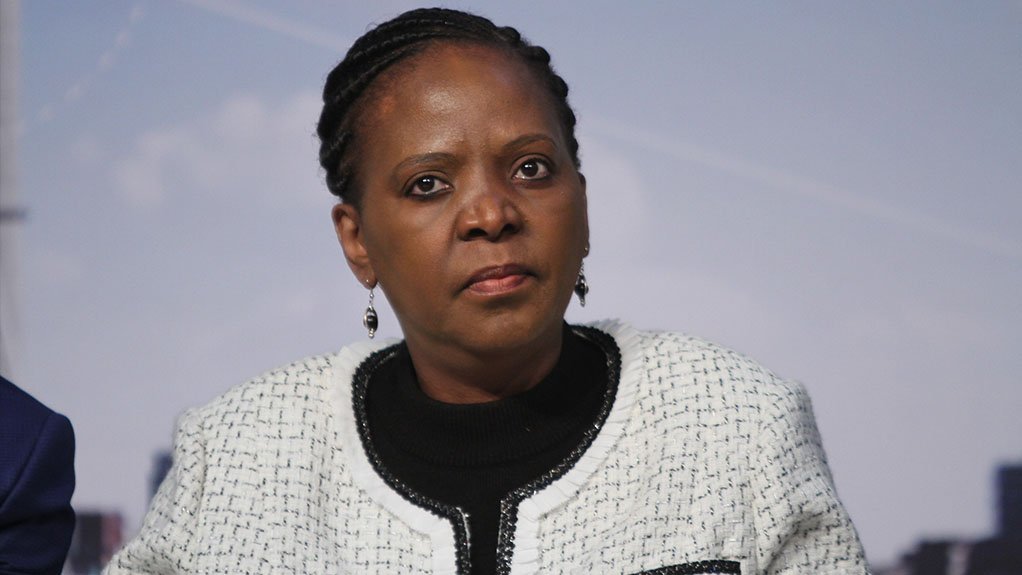In a hard sell to the private investment community, Gauteng Infrastructure Development MEC Nandi Mayathula-Khoza on Friday reiterated her province’s need for private-sector equity investment in its bold infrastructure roll-out programme, telling delegates at the inaugural Gauteng Infrastructure Investment Conference that several projects across the water, sanitation and energy sectors were investment-ready.
“We are pitching some projects, especially in energy efficiency, to allow bankers to take them up [as investment opportunities] and implement them [in collaboration] with the province.
“This forms part of our integrated [infrastructure development strategy] that will require us to work with civil society and the private sector . . . [and] we will need public–private partnerships (PPP) to achieve this,” she commented.
Mayathula-Khoza’s comments came on the second day of the conference, which had been pitched as a platform through which the private sector and the Gauteng provincial government (GPG) could engage over issues of infrastructure planning, development and investment.
Her presentation also followed an address by Gauteng Premier David Makhura on Thursday, who reiterated the province’s intention to partner “meaningfully” with the private sector, while lauding the private sector for remaining the “mainstay” of fixed investment in the Gauteng economy, currently accounting for 80% of gross fixed capital formation.
Expounding on the importance of infrastructure investment, University of the Witwatersrand economist Dr Kenneth Creamer advanced during a panel session that infrastructural development would play an integral role in dismantling the current “engines of inequality”, which he considered a structural problem that required a structural solution.
“Infrastructure is an antidote to inequality . . . and will change the structure of opportunity in the economy, allowing [enhanced economic inclusion] and further participation by companies in the economy,” he remarked.
A primary constraint to infrastructure expansion, however, remained the securing of sufficient financing, with below-envisaged local economic growth rates, limited spending and dampened tax revenues hampering project development.
“Government thus has fewer [financial] resources available for infrastructure and to avoid the debt trap, implements fiscal consolidation, which is the current catch phrase.
“We [thus] need to have new ways of financing our infrastructure programme through PPPs, new development finance institutions, such as the Brics New Development Bank, and politically effective user-pays systems. There needs to be a new mood of cooperation,” Creamer noted.
South Africa’s often convoluted regulatory environment was also considered a constraint to infrastructure development in the province; although recent efforts by the GPG in the form of transparent-tendering pilot-projects had suggested a shift in provincial government’s approach to its often criticised bureaucratic processes.
“The key to unlocking problems is good politics and governance, which will lead to the radical economic outcomes that Gauteng and South Africa desires, increase economic inclusion, generate employment creation and reduce inequality,” he averred.
TRIGGER PROJECTS
Returning to the province’s project portfolio, Mayathula-Khoza said several investment opportunities were available across a suite of infrastructure development projects by the GPG, whose development plans remained informed by the overarching Transformation, Modernisation and Reindustrialisation (TMR) strategy.
Gauteng’s draft water and sanitation strategy sketched out several planned and ongoing infrastructure projects that she said looked to remedy provincial water shortages and serve its larger developmental goals.
“The population of Gauteng is set to increase by 300 000 a year, so we need to plan for this increase. Gauteng also uses 11% of the country’s water, with the biggest [users] being irrigation and the urban sector, which, collectively, account for over 79% of [the province’s water] consumption.
“Demand for water is also likely to exceed [supply] after 2030 . . . and [we thus need improved infrastructure] to reduce water consumption and increase supply,” she said, in emphasising the province’s need for investment.
This strategy, the MEC advanced, would require a change in the scale of water infrastructure, such as canals, pipelines, storm water drainage systems and dams, as well as the accelerated roll-out of rainwater harvesting and the desalination of acid mine drainage water.
Additional regional bulk water projects included the Sedibeng regional sanitation scheme and the Western highveld water supply scheme – both of which provided opportunities for investors.
Meanwhile, Mayathula-Khoza further said that investment opportunities abounded in energy infrastructure, citing the province’s ongoing review of its energy mix to align it with the environmental and energy efficiency objectives of the TMR strategy.
“In this regard, we are looking at supply-side interventions, such as cogeneration, gas-based energy generation and utility-scale renewables.
“On the demand side, we are encouraging energy efficiency by households and industry,” she noted.
Among specific energy infrastructure projects available for investment, Mayathula-Khoza’s called for private-sector buy-in to Gauteng’s 500 MW solar rooftop programme, as well as its energy efficient lightbulb retrofit programme, which would see all light-emitting diode lightbulbs in the province’s 21 hospitals replaced with energy efficient lightbulbs.
The GPG’s gas supply programme, which would see the supply of gas-generated energy to the province’s hospitals through several cogeneration projects, provided further equity investment prospects, she said.
EMAIL THIS ARTICLE SAVE THIS ARTICLE
To subscribe email subscriptions@creamermedia.co.za or click here
To advertise email advertising@creamermedia.co.za or click here











